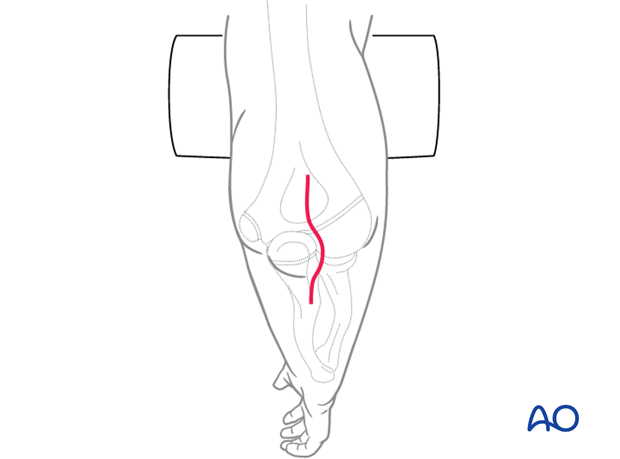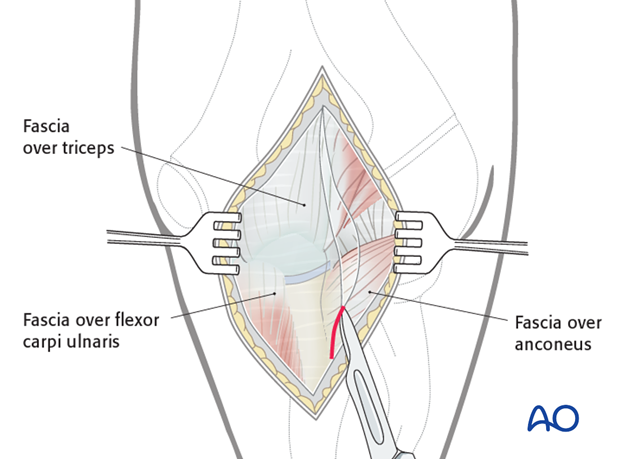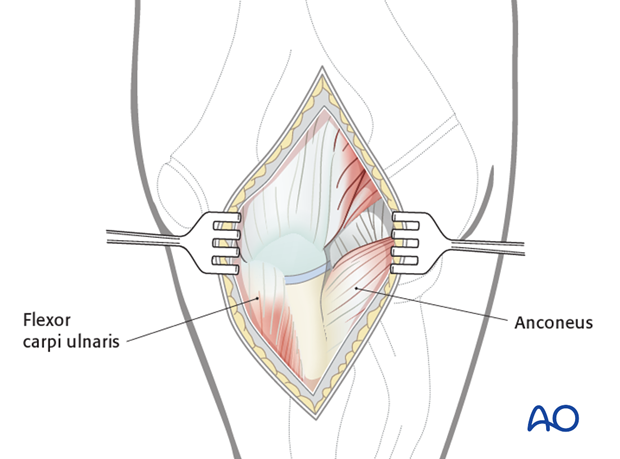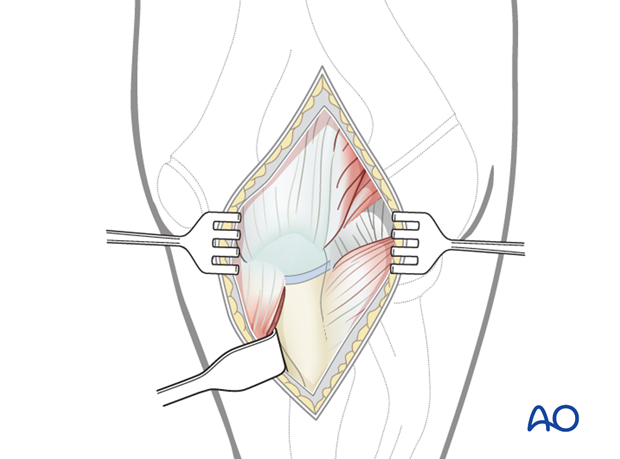Posterior approach to the pediatric ulna
1. Introduction
Olecranon fractures can be addressed through a posterior midline skin incision curved slightly laterally around the tip of the olecranon.
2. Skin incision
Start the incision a few centimeters proximal to the tip of the olecranon.
Curve it slightly laterally around the tip of the olecranon to prevent ulnar nerve injury and scar irritation when leaning on the elbow.
The incision may be extended as far distally as desired as the direct (subcutaneous) approach to the ulnar shaft.

3. Dissection
Incise the deep fascia in line with the incision to approach the dorsal border of the ulna directly.
Note: To access the tip of the olecranon it may be useful to split the triceps tendon.

Visualize the dorsal border of the olecranon and expose the proximal ulnar metaphysis between anconeus and flexor carpi ulnaris.

This provides good access to the ulnar aspect of the proximal ulnar metaphysis and can be extended to expose the ulnar shaft.

4. Wound closure
Reattach flexor carpi ulnaris and anconeus and repair the fascia with resorbable sutures.
Close skin and subcutaneous tissue with resorbable sutures.
If swelling or skin condition is a concern nonabsorbable sutures are acceptable.













